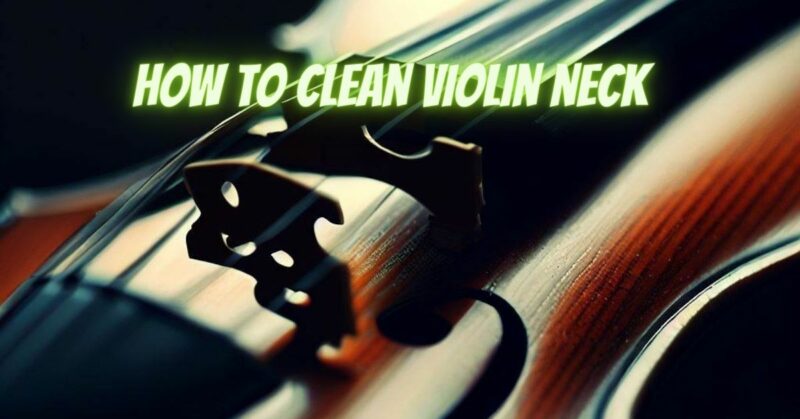The neck of a violin is a critical component that requires regular cleaning and maintenance to ensure optimal playability. Over time, dirt, oils, and rosin residue can accumulate on the neck, affecting your grip and the overall feel of the instrument. In this article, we will guide you through the steps to effectively clean your violin neck, helping you maintain its smoothness and playability.
- Gather the Necessary Materials:
- Soft Cleaning Cloth: Use a lint-free, non-abrasive cloth, such as a microfiber cloth or a soft cotton cloth, for cleaning the violin neck.
- Mild Cleaning Solution: Prepare a gentle cleaning solution by mixing a small amount of mild dish soap with warm water. Avoid using harsh chemicals or solvents that could damage the varnish or the wood.
- Protect the Violin Body:
- Before cleaning the neck, take precautions to protect the violin body. You can use a soft cloth or a small towel to cover the body and the fingerboard, ensuring that no moisture or cleaning solution comes into contact with these areas.
- Dampen the Cloth:
- Dampen a portion of the soft cloth with the mild cleaning solution. Make sure the cloth is moist but not soaking wet, as excessive moisture can damage the instrument.
- Clean the Neck:
- Gently rub the damp cloth along the entire length of the violin neck, applying light pressure. Move in a back-and-forth motion, following the grain of the wood.
- Pay particular attention to areas where rosin residue or oils may have accumulated, such as the lower positions of the neck or around the thumb area.
- Avoid excessive pressure or scrubbing, as this can potentially damage the varnish or the wood.
- Dry and Polish:
- Once you have cleaned the neck, use a dry portion of the cloth to gently remove any excess moisture. Ensure that the neck is completely dry before continuing.
- If desired, you can use a separate dry cloth to polish the neck, gently buffing it in circular motions. This can help restore the shine and smoothness of the wood.
- Final Considerations:
- After cleaning, ensure that the violin neck is free from any cleaning solution residue. Inspect the neck to ensure that it is clean and dry before storing or playing the instrument.
- It is recommended to clean the violin neck regularly, depending on your usage and the accumulation of dirt or rosin residue. Regular cleaning will help maintain the playability and condition of the instrument.
Conclusion:
Regularly cleaning the violin neck is essential for maintaining its smoothness and playability. By following the steps outlined in this article and using mild cleaning solutions and gentle techniques, you can effectively remove dirt, oils, and rosin residue from the neck. Remember to protect the violin body and avoid excessive moisture or pressure during the cleaning process. With proper care and maintenance, your violin neck will remain clean, smooth, and ready to produce beautiful music.


